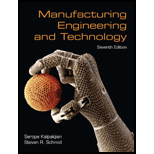
Manufacturing Engineering & Technology
7th Edition
ISBN: 9780133128741
Author: Serope Kalpakjian, Steven Schmid
Publisher: Prentice Hall
expand_more
expand_more
format_list_bulleted
Textbook Question
Chapter 2, Problem 9RQ
Describe the differences between brittle and ductile fracture.
Expert Solution & Answer
Want to see the full answer?
Check out a sample textbook solution
Students have asked these similar questions
What is gearbox
3
Water at 15°C ( p = 999.1 kg/m³ and µ = 1.138 × 10¯³kg/m.s) is flowing
steadily in a 34-m-long and 6-cm-diameter horizontal pipe made of stainless
steel at a rate of 10 L/s. Determine the pressure drop, the head loss, and the
pumping power requirement to overcome this pressure drop. The roughness
of stainless steel is 0.002 mm.
10 L/s
6 cm
L
The pressure drop is 34.77
kPa.
The head loss is 3.55 m. (Round the final answer to two decimal places.)
The pumping power requirement is 0.348 kW. (Round the final answer to
three decimal places.)
6
10
ints awarded
Scored
Gasoline ( p = 680 kg/m³ and v = 4.29 × 107 m²/s) is transported at a
rate of 240 L/s for a distance of 2 kilometre. The surface roughness of the
piping is 0.03 mm. If the head loss due to pipe friction is not to exceed 14 m,
determine the minimum diameter of the pipe using the third Swamee-Jain
formula. (Round the final answer to three decimal places.)
The minimum diameter of the pipe is 0.443
m.
Chapter 2 Solutions
Manufacturing Engineering & Technology
Ch. 2 - Distinguish between engineering stress and true...Ch. 2 - In a stress-strain curve, what is the proportional...Ch. 2 - Describe the events that take place when a...Ch. 2 - What is ductility, and how is it measured?Ch. 2 - In the equation =Kn, which represents the true...Ch. 2 - What is strain-rate sensitivity, and how is it...Ch. 2 - What test can measure the properties of a material...Ch. 2 - What testing procedures can be used to measure the...Ch. 2 - Describe the differences between brittle and...Ch. 2 - What is hardness? Explain.
Ch. 2 - Describe the features of a Rockwell hardness test.Ch. 2 - What is a Leeb test? How is it different from a...Ch. 2 - Differentiate between stress relaxation and creep.Ch. 2 - Describe the difference between elastic and...Ch. 2 - Explain what uniform elongation means in tension...Ch. 2 - Describe the difference between deformation rate...Ch. 2 - Describe the difficulties involved in conducting a...Ch. 2 - What is Hookes law? Youngs modulus? Poissons...Ch. 2 - Describe the difference between transgranular and...Ch. 2 - What is the reason that yield strength is...Ch. 2 - Why does the fatigue strength of a specimen or...Ch. 2 - If striations are observed under microscopic...Ch. 2 - What is an Izod test? Why are Izod tests useful?Ch. 2 - Why does temperature increase during plastic...Ch. 2 - What is residual stress? How can residual stresses...Ch. 2 - On the same scale for stress, the tensile true...Ch. 2 - What are the similarities and differences between...Ch. 2 - Can a material have a negative Poissons ratio?...Ch. 2 - It has been stated that the higher the value of m,...Ch. 2 - Explain why materials with high m values, such as...Ch. 2 - With a simple sketch, explain whether it is...Ch. 2 - Explain why the difference between engineering...Ch. 2 - Consider an elastomer, such as a rubber band. This...Ch. 2 - If a material (such as aluminum) does not have an...Ch. 2 - What role, if any, does friction play in a...Ch. 2 - Which hardness tests and scales would you use for...Ch. 2 - Consider the circumstance where a Vickers hardness...Ch. 2 - Which of the two tests, tension or compression,...Ch. 2 - List and explain briefly the conditions that...Ch. 2 - List the factors that you would consider in...Ch. 2 - On the basis of Fig. 2.5, can you calculate the...Ch. 2 - If a metal tension-test specimen is rapidly pulled...Ch. 2 - Comment on your observations regarding the...Ch. 2 - Will the disk test be applicable to a ductile...Ch. 2 - What hardness test is suitable for determining the...Ch. 2 - Wire rope consists of many wires that bend and...Ch. 2 - A statistical sampling of Rockwell C hardness...Ch. 2 - In a Brinell hardness test, the resulting...Ch. 2 - Some coatings are extremely thinsome as thin as a...Ch. 2 - Select an appropriate hardness test for each of...Ch. 2 - A paper clip is made of wire 0.5 mm in diameter....Ch. 2 - A 250-mm-long strip of metal is stretched in two...Ch. 2 - Identify the two materials in Fig. 2.5 that have...Ch. 2 - Plot the ultimate strength vs. stiffness for the...Ch. 2 - If you remove the layer of material ad from the...Ch. 2 - Prove that the true strain at necking equals the...Ch. 2 - Percent elongation is always defined in terms of...Ch. 2 - You are given the K and n values of two different...Ch. 2 - A cable is made of two strands of different...Ch. 2 - On the basis of the information given in Fig. 2.5,...Ch. 2 - In a disk test performed on a specimen 1.00 in. in...Ch. 2 - A piece of steel has a hardness of 300 HB....Ch. 2 - A metal has the following properties: UTS = 70,000...Ch. 2 - Using only Fig. 2.5, calculate the maximum load in...Ch. 2 - Estimate the modulus of resilience for a highly...Ch. 2 - A metal has a strength coefficient K = 100,000 psi...Ch. 2 - Plot the true stresstrue strain curves for the...Ch. 2 - The design specification for a metal requires a...Ch. 2 - Calculate the major and minor pyramid angles for a...Ch. 2 - If a material has a target hardness of 300 HB,...Ch. 2 - A Rockwell A test was conducted on a material and...Ch. 2 - For a cold-drawn 0.5% carbon steel, will a...Ch. 2 - A material is tested in tension. Over a 1-in. gage...Ch. 2 - A horizontal rigid bar cc is subjecting specimen a...Ch. 2 - List and explain the desirable mechanical...Ch. 2 - When making a hamburger, you may have observed the...Ch. 2 - An inexpensive claylike material called Silly...Ch. 2 - In tension testing of specimens, mechanical and...Ch. 2 - Demonstrate the impact toughness of a piece of...Ch. 2 - Using a large rubber band and a set of weights,...Ch. 2 - Find or prepare some solid circular pieces of...Ch. 2 - Take several rubber bands and pull them at...Ch. 2 - Devise a simple fixture for conducting the bend...Ch. 2 - By pressing a small ball bearing against the top...Ch. 2 - Describe your observations regarding Fig. 2.14c.Ch. 2 - Embed a small steel ball in a soft block of...Ch. 2 - Devise a simple experiment, and perform tests on...Ch. 2 - Obtain some solid and some tubular metal pieces,...Ch. 2 - Explain how you would obtain an estimate of the...Ch. 2 - Without using the words stress or strain, define...Ch. 2 - We know that it is relatively easy to subject a...
Knowledge Booster
Learn more about
Need a deep-dive on the concept behind this application? Look no further. Learn more about this topic, mechanical-engineering and related others by exploring similar questions and additional content below.Similar questions
- 1 Water at 15°C ( p = 999.1 kg/m³ and µ = 1.138 × 10¯¯³kg/m.s) is flowing steadily in a 34-m-long and 6-cm-diameter horizontal pipe made of stainless steel at a rate of 10 L/s. Determine the pressure drop, the head loss, and the pumping power requirement to overcome this pressure drop. The roughness of stainless steel is 0.002 mm. eBook Hint 10 L/s 6 cm L The pressure drop is The head loss is kPa. |m. (Round the final answer to two decimal places.) The pumping power requirement is three decimal places.) kW. (Round the final answer toarrow_forward3 eBook Hint Air enters an 15-m-long section of a rectangular duct of cross section 15 cm x 20 cm made of commercial steel at 1 atm and 35°C at an average speed of 5 m/s. Disregarding the entrance effects, determine the fan power needed to overcome the pressure losses in this section of the duct. The properties of air at 1 atm and 35°C are p = 1.145 kg/m³, µ = 1.895 × 10−5 kg/m·s, and v = 1.655 × 10¯5m²/s. The roughness of commercial steel surfaces is = 0.000045 m. (Round the final answer to three decimal places.) L 15 cm Air 20 cm 5 m/s The fan power needed to overcome the pressure losses is 4.0695 W.arrow_forward12) A particle is moving along a circular path having a radius of 6 in. such that its position as a function of time is given by 0 = sin 3t, where 0 is in radians, the argument for the sine are in radians, and t is in seconds. Determine the acceleration of the particle at 0 = 30°. The particle starts from rest at 0 = 0°.arrow_forward
- 6) == The particle travels along the path defined by the parabola y 0.5x2. If the component of velocity along the x axis is Vx = (5t) ft/s, where t is in seconds, determine the particle's distance from the origin O and the magnitude of its acceleration when t = 1s. When t 0, x = 0, y = 0. =arrow_forward7) Determine the minimum initial velocity vo and the corresponding angle 00 at which the ball must be kicked in order for it to just cross over the 3-m high fence. VO θα 6 m 3 marrow_forward11) = If a particle moves along a path such that r = (2 cost) ft and (t/2) rad, where t is in seconds, plot the path r = f(0) and determine the particle's radial and transverse components of velocity and acceleration.arrow_forward
- 9) The car travels around the circular track having a radius of r = 300 m such that when it is at point A it has a velocity of 5 m/s, which is increasing at the rate of v = (0.06t) m/s², where t is in seconds. Determine the magnitudes of its velocity and acceleration when it has traveled one-third the way around the track.arrow_forward15) Two boats leave the pier P at the same time and travel in the directions shown. If v = 40 ft/s and vB = 30 ft/s, VA determine the velocity of boat A relative to boat B. How long after leaving the pier will the boats be 1500 ft apart? =40 ft/s UB=30 ft/s 30° 45°arrow_forward14) Determine the time needed for the load at B to attain a speed of 10 m/s, starting from rest, if the cable is drawn into the motor with an acceleration of 3 m/s². C Barrow_forward
- 13) Starting from rest, the cable can be wound onto the drum of the motor at a rate of v₁ = (31²) m/s, where t is in seconds. Determine the time needed to lift the load 7 m. 40 D A C Barrow_forward13) Starting from rest, the cable can be wound onto the drum of the motor at a rate of v₁ = (31²) m/s, where t is in seconds. Determine the time needed to lift the load 7 m.arrow_forward10) At a given instant the train engine at E has a speed of 20 m/s and an acceleration of 14 m/s² acting in the direction shown. Determine the rate of increase in the train's speed and the radius of curvature p of the path. Ans. a 14 m/s² E v = 20 m/sarrow_forward
arrow_back_ios
SEE MORE QUESTIONS
arrow_forward_ios
Recommended textbooks for you
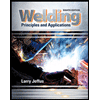 Welding: Principles and Applications (MindTap Cou...Mechanical EngineeringISBN:9781305494695Author:Larry JeffusPublisher:Cengage Learning
Welding: Principles and Applications (MindTap Cou...Mechanical EngineeringISBN:9781305494695Author:Larry JeffusPublisher:Cengage Learning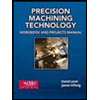 Precision Machining Technology (MindTap Course Li...Mechanical EngineeringISBN:9781285444543Author:Peter J. Hoffman, Eric S. Hopewell, Brian JanesPublisher:Cengage Learning
Precision Machining Technology (MindTap Course Li...Mechanical EngineeringISBN:9781285444543Author:Peter J. Hoffman, Eric S. Hopewell, Brian JanesPublisher:Cengage Learning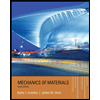 Mechanics of Materials (MindTap Course List)Mechanical EngineeringISBN:9781337093347Author:Barry J. Goodno, James M. GerePublisher:Cengage Learning
Mechanics of Materials (MindTap Course List)Mechanical EngineeringISBN:9781337093347Author:Barry J. Goodno, James M. GerePublisher:Cengage Learning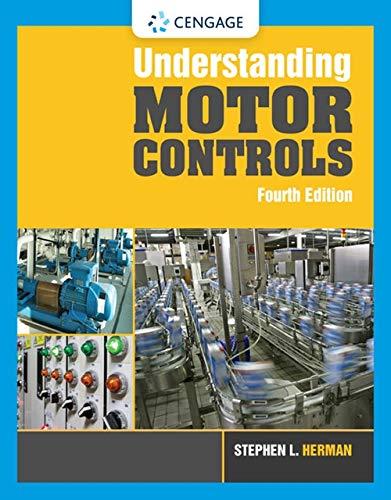 Understanding Motor ControlsMechanical EngineeringISBN:9781337798686Author:Stephen L. HermanPublisher:Delmar Cengage Learning
Understanding Motor ControlsMechanical EngineeringISBN:9781337798686Author:Stephen L. HermanPublisher:Delmar Cengage Learning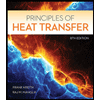 Principles of Heat Transfer (Activate Learning wi...Mechanical EngineeringISBN:9781305387102Author:Kreith, Frank; Manglik, Raj M.Publisher:Cengage Learning
Principles of Heat Transfer (Activate Learning wi...Mechanical EngineeringISBN:9781305387102Author:Kreith, Frank; Manglik, Raj M.Publisher:Cengage Learning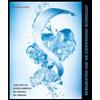 Refrigeration and Air Conditioning Technology (Mi...Mechanical EngineeringISBN:9781305578296Author:John Tomczyk, Eugene Silberstein, Bill Whitman, Bill JohnsonPublisher:Cengage Learning
Refrigeration and Air Conditioning Technology (Mi...Mechanical EngineeringISBN:9781305578296Author:John Tomczyk, Eugene Silberstein, Bill Whitman, Bill JohnsonPublisher:Cengage Learning

Welding: Principles and Applications (MindTap Cou...
Mechanical Engineering
ISBN:9781305494695
Author:Larry Jeffus
Publisher:Cengage Learning

Precision Machining Technology (MindTap Course Li...
Mechanical Engineering
ISBN:9781285444543
Author:Peter J. Hoffman, Eric S. Hopewell, Brian Janes
Publisher:Cengage Learning

Mechanics of Materials (MindTap Course List)
Mechanical Engineering
ISBN:9781337093347
Author:Barry J. Goodno, James M. Gere
Publisher:Cengage Learning

Understanding Motor Controls
Mechanical Engineering
ISBN:9781337798686
Author:Stephen L. Herman
Publisher:Delmar Cengage Learning

Principles of Heat Transfer (Activate Learning wi...
Mechanical Engineering
ISBN:9781305387102
Author:Kreith, Frank; Manglik, Raj M.
Publisher:Cengage Learning

Refrigeration and Air Conditioning Technology (Mi...
Mechanical Engineering
ISBN:9781305578296
Author:John Tomczyk, Eugene Silberstein, Bill Whitman, Bill Johnson
Publisher:Cengage Learning
Understanding Failure Theories (Tresca, von Mises etc...); Author: The Efficient Engineer;https://www.youtube.com/watch?v=xkbQnBAOFEg;License: Standard youtube license